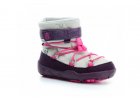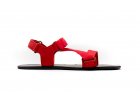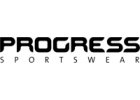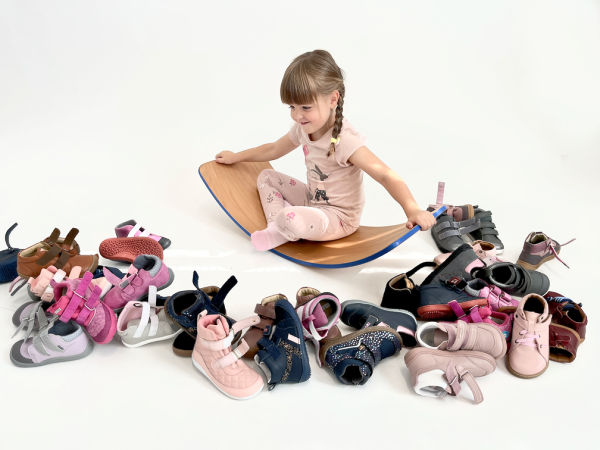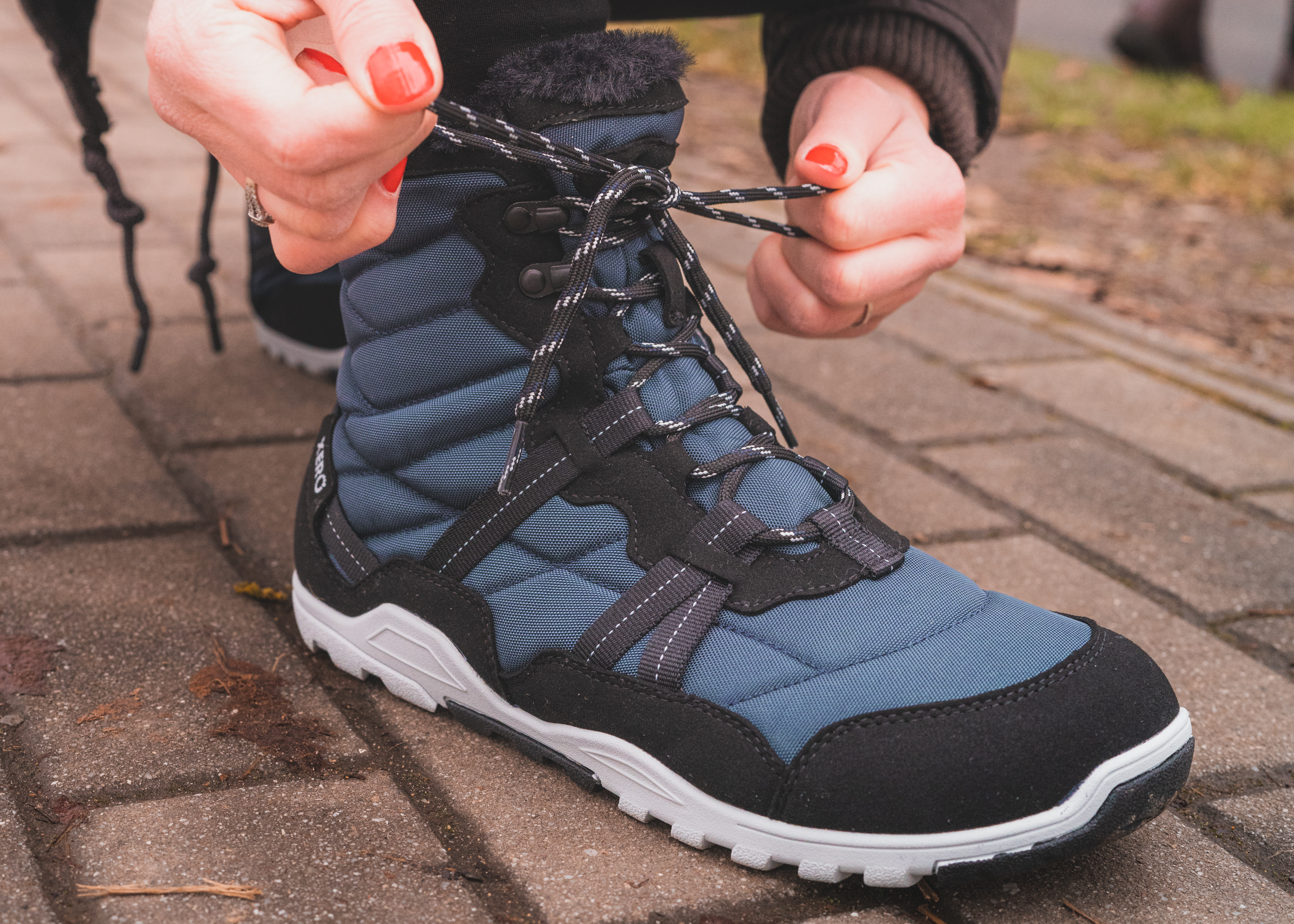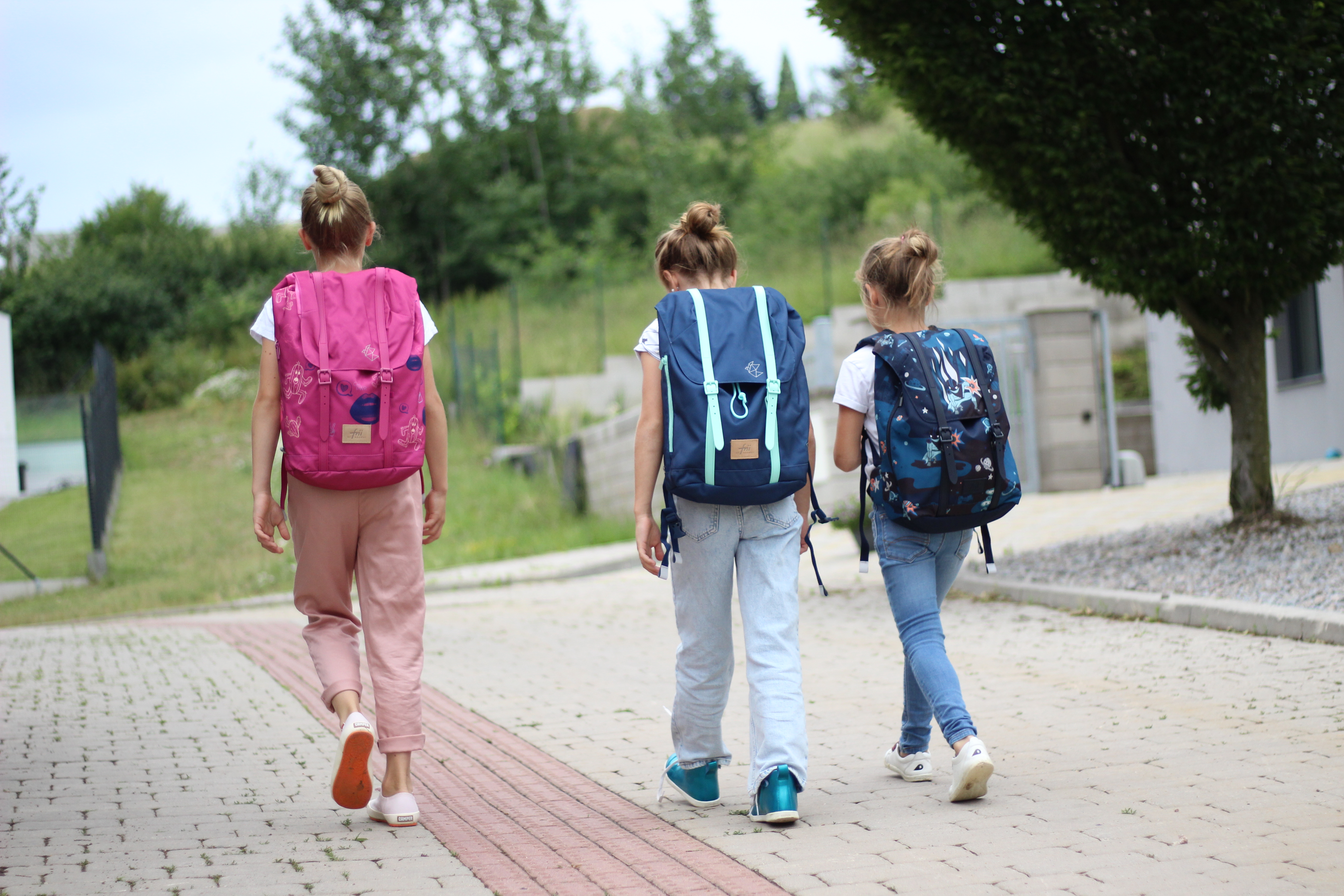How is wearing the wrong shoes related to pain in the feet and the rest of the body? Let's take a closer look at the functioning of the musculoskeletal system, the effect of inappropriate footwear on the body and the early prevention of unpleasant pain.
Content of the article
Which are the wrong shoes?
Bad shoes are those that cause deformities of the foot, deviate the foot from the optimal position and, when worn for a long time, lead to damage to individual parts of the musculoskeletal system and the associated pain. "The most common cause of any pain in our feet is that we wear shoes," confirms Dr. Katerina Cajthamlova.
Examples of wrong shoes
There are a number of inappropriate shoes, among the most problematic are:
- women's high heeled pumps - they overload the front part of the foot, shift the centre of gravity of the body from the optimal position
- narrow shoes - narrow toe box squeezes the toes
- platform shoes - high and hard soles do not allow the foot to bend naturally
"An ill-fitting shoe or a poor quality shoe is the worst thing your foot deserves. Make sure you choose the right shoes and never underestimate them. You shouldn't feel any pressure when you walk, the room for the toe should be 1 cm and the shoe can't slip off," warn orthopaedic surgeons at Orthomedica about the risks of wrong shoes.
Why are common shoes harmful?
"The current shoes are a problem. They are stiff, unyielding, the foot cannot work in them. In addition, they are often narrow at the toe and front. The toe area is where the foot deforms the most. Look at modern shoes and their shape and the natural shape of the foot. The foot is just wide in the front, that's how we are made and the shoe should follow the shape of the foot," says physiotherapist Jana Papirnikova Sialini, who describes the pitfalls of most shoes.

Body pain
The fundamentals of sports kinesiology teach that "body parts that are flexibly interconnected, form a synergistic whole that is capable of generating a broad-spectrum movement pattern. In analysing such complex segmental movement, it is necessary to understand not only the movement at the central centre of gravity, but also the movements of the individual segments."
Simply speaking, we see the body as an interconnected whole, where a malfunction in one part can cause complications elsewhere. If you feel pain, perhaps it's coming from your feet. We'll explore the possible link between inappropriate shoes and individual pain more closely below, but as a rule of thumb, any health problems should always be consulted with medical professionals.
Toes pain
Pain in the fingers most often results from their pressure against each other. Too small shoes, a narrow toe box or an incorrect toe shape that doesn't give the toes (especially the big toe) enough room to fan out can be to blame. A bunion on a big toe or a pinky toe can put pressure on the other toes, resulting in deformities that include claw toes or hammer toes.
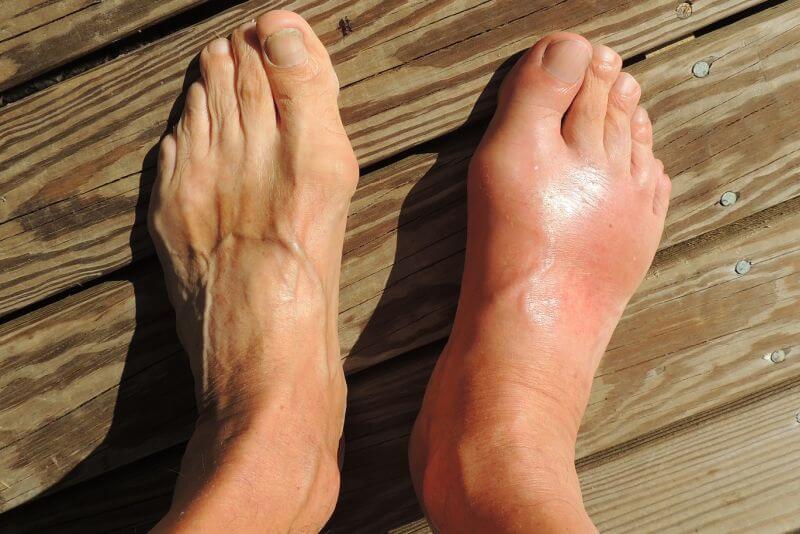
To prevent toe pain, shoes with anatomical toe shaping that respects the natural shape of the foot will help. If the foot has not only enough space in length but also in width, the spread toes can serve as a support and actively help the correct unfolding of the step.
Feet pain
Foot pain is one of the signals of a collapsed arch. In the first stage, foot fatigue from excessive load is present. This then progresses to mild foot pain, which may not yet be too restrictive. If not intervened in time, it can increase in intensity and make prolonged exertion or more intense physical activities (sports) impossible.
The foot arch strengthens with active training. If you identify foot pain early (before the foot is completely flat), you can gradually restore the arch to its original functionality by exercising the foot and easing the load. Limit long periods of standing, walking all day or body weight, and give the foot enough rest after exertion to recover. Many cushioned, moulded shoes or orthotic insoles do support the arch of the foot, but this makes the arch lazy and weak instead of strengthening it. On the other hand, walking completely barefoot on soft and uneven surfaces is ideal for arch training; in the case of shoes, those with flat, thin and soft soles are suitable.
Heel pain
Heel pain is most commonly caused by heel spur and plantar fasciitis, caused by prolonged overuse of the heel area. Your heel hurts if you stomp when you walk, have improper running technique, spend days on your feet, but pain can also arise as a result of a previous injury.

If you have heel pain, you need a soft heel strike. On soft surfaces (e.g. on grass in the garden) you can go barefoot or in shoes with thin soles, the closer contact with the ground acts as a pleasant massage. However, avoid thin soles on hard surfaces, you need a higher sole or add an insole to cushion the impact. For even weight distribution, the thicker sole should be flat and the shoe should give your toes enough room.
Achilles pain
According to physiotherapist Adela Papouskova from Fyzioterra, the Achilles tendon pain most often affects active athletes who overload it in an unreasonable way. It can arise either from rebounding on a hard surface (gymnasts, volleyball players, basketball players, ...), but more often by simply rubbing and rubbing the tendon on the edge or inside of the shoe.
Attention should also be paid to extremely high heels. The regular wearing of such shoes causes a gradual shortening of the Achilles tendon, where even standing on a flat foot seems difficult, often leading to surgery. Shoes with a flat sole and an unreinforced sole prevent this problem.

Ankle pain
"There can be many causes of ankle pain. For example, wrong stepping, wearing inappropriate footwear. In many cases, the cause is overloading the ankle from long walking, running or even standing still, but sometimes the pain can arise seemingly without cause," says podiatrist and orthopaedic surgeon Marie Souckova. The problem can arise in childhood if, due to incorrect movement patterns, children develop a valgus ankle, which cannot be corrected once the bones grow at the wrong angle.
The big toe plays an important role. If the body does not have sufficient support there, the arches collapse and the ankle deflects in an undesirable direction. With prolonged loading, it can then be weakened and therefore more prone to sprain. A wide toe box and a flat sole helps to keep the ankle in the correct position.
Knee pain
"The way we walk has a significant impact on our knee joints, especially over time. For example, if the feet curl too far in or out as we walk, the lower leg is forced to move in a way that puts additional strain and pressure on the knee with each step. People who have a limited range of motion in their ankles also have pain in their knees," explains physiotherapist David Krampol of Fyzio svet ('Physio World')", describing the transfer of pain from the foot to the knee.

Also, a high heel leads to overpressure on the thigh muscles and the kneecap. Another popular type of shoe is a sturdy over-the-ankle shoe. Such a shoe absolutely fixes the foot and ankle, so that the unevenness of the terrain is balanced by the knee. In order not to wear it out too much, you should reach for shoes with a flat and flexible sole.
Hip pain
Hip pain can indicate a bad hip position, among other causes. Again, shoes with a wide toe box and a flat sole can help. The linking of the individual parts from the toe to the spine is explained in more detail by natural movement lecturer Matyas Kozma:
"If the shoe has a stiff sole and a raised toe, it forces us to keep the toe up and not lean on it. The body looks for stability in a different way. We shift our weight back a little more, bend the knee, stick our bottom out and flex the lumbar spine. As a result of this compensatory manoeuvre, our knees suffer a lot, because we literally twist them. This knee extension deactivates the muscles and overloads the ligaments that naturally stabilise the knee. Over time, this weakens the knees and greatly increases the risk of knee ligament rupture. We also strain our lumbar spine, putting pressure on the discs and deactivating the internal abdominal muscles. These become flaccid and the lower abdomen 'pops out'. Last but not least, the ankles, hips and cervical spine also suffer."
Pain in the sacrum
The above mentioned flexion of the lumbar spine compresses the intervertebral discs, which leads to pain in the sacrum. Another risk factor is standing for long periods or sitting at a computer all day. At such a time, it is necessary to think about the correct posture and adapt the working environment to it.

Back pain
It seems relatively far from your feet to your back, but you probably already understand the interconnection of the whole chain. A too high heel leads to a forward weight transfer that touches the whole body. To prevent the back muscles from falling over and to keep the body upright, they make an increased effort. Prolonged overloading can cause the spine to be out of its natural line, the bent spine presses on the nerves and they send pain signals. Shoes with a flat sole and a wide toe box would suffice.
Healthy shoes
While experts debate the exact characteristics of healthy shoes, physiotherapist Stepanka Krckova Hovorkova provides an ideal definition: "The perfect shoe is the one that least interferes with the foot while working." She specifies 6 points on how to know the right shoe:
- Easily flexible thin sole
- Toe rests on the ground
- Zero difference in sole height between heel and toe
- Wide toe box
- Flexible shoe upper
- Suitable size
Benefits of barefoot shoes
The previous paragraphs clearly show the benefits of barefoot shoes:
- They have a wide finger section in which the fingers can be comfortably spread and rested on.
- The thin and flexible sole allows the foot to respond to uneven terrain.
- The flat sole from toe to heel keeps the body's centre of gravity in the correct position.
Even Dr Cajthamlova advises to wear shoes with the right width and soft soles. Will you try them?









